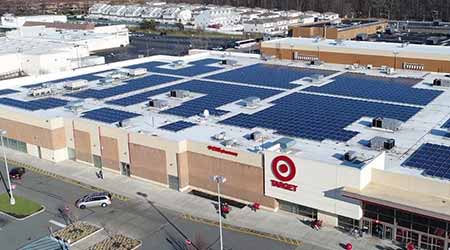Net-Metering Provides Huge Financial Benefit for Solar
With many solar incentives sunsetting, the best way to make solar financially feasible is with new utility net-metering programs for solar.
Over the past decade and more, rebates and incentives have largely been focused on coaxing more solar power onto the electrical grid. But today the picture is more complicated.
“In general, the number of incentives for solar is decreasing while the number of incentives for energy storage and EV and EV-related equipment is increasing, due to the stage of development of those different technologies,” says Brett Feldman, research director of demand side management at Navigant.
Energy tax incentives from the federal government for solar and wind power are sunsetting, Feldman says. What’s more, import tariffs have been imposed on solar modules coming from China, he says.
According to Brian Lips, senior project manager for policy at the North Carolina Clean Energy Technology Center, five years or more ago, solar was more expensive, so a lot of states and utilities offered incentives to help with upfront costs, primarily in the form of rebates. California led the way, with a 10-year solar initiative funded with $3 billion in rebates for residential homes and commercial businesses to install panels on roofs. That program has wound down, as has another robust program in New Jersey. Some states still have sales tax or property tax incentives for building solar systems. For example, a property assessor will ignore the value added to a property that installs solar panels.
The North Carolina Clean Energy Technology Center offers a free public data base, called DSIRE (Database of State Incentives for Renewables and Efficiency), which lists every federal, state, and utility financial incentive and regulatory policy that supports the use of renewable energy and energy efficiency (but excludes incentives for electric vehicles), and a subscription service covering distributed solar, grid modernization, and electric vehicles.
Today the major solar incentives are the cost savings accruing through net-metering systems. With net metering, solar power provides electricity to users directly, in their own buildings, so they are charged only for the amount of energy they pull from the electrical grid. If a solar system produces more energy than a user needs, that energy is exported to the grid, the customer’s power meter spins backward, and the customer will get credit for that energy at the retail rate. “Just about every state has net-metering rules in place, although they vary from state to state,” Lips says.
Some states permit a metering method known as buy-all/sell-all, says Lips. This approach is less attractive for the customer with a solar power system, who pays for electricity at the retail rate while selling electricity back to the utility at a lower rate. Most investor-owned utilities, which are regulated at the state level, have net-metering rules, explains Lips, while energy cooperatives and municipal utilities are self-regulating and may use buy-all/sell-all arrangements.
“Net metering is crucially important for anyone thinking about going solar,” Lips says, “since net metering has a huge impact on the financials of solar.” Any facility manager looking into solar should understand the metering rules for their utility and what kind of incentive may be offered in lieu of net metering.
Rate design is another factor in how much customers save with solar. “We’ve seen over the past few years a concerted effort by utilities to increase their monthly fixed charges and decrease volumetric rates,” Lips says. Facilities that produce their own solar power are stuck with a higher monthly payment just for being connected to the grid, even if they are offsetting a significant amount of their energy use with solar power. Some states have granted increases; in other cases, other regulators have denied such requests.
Related Topics:













